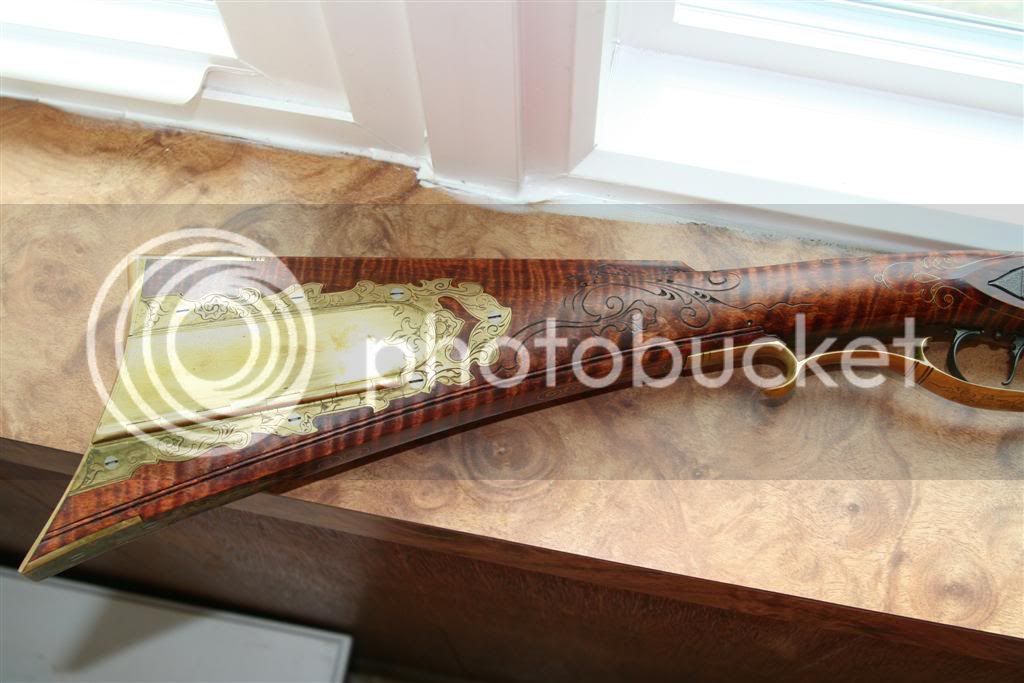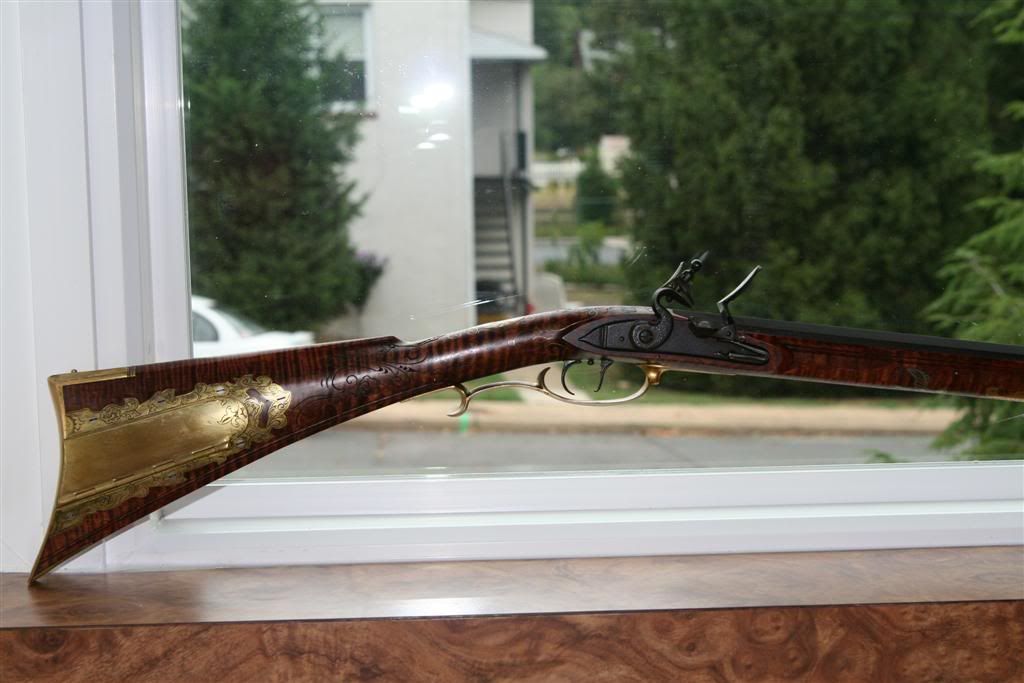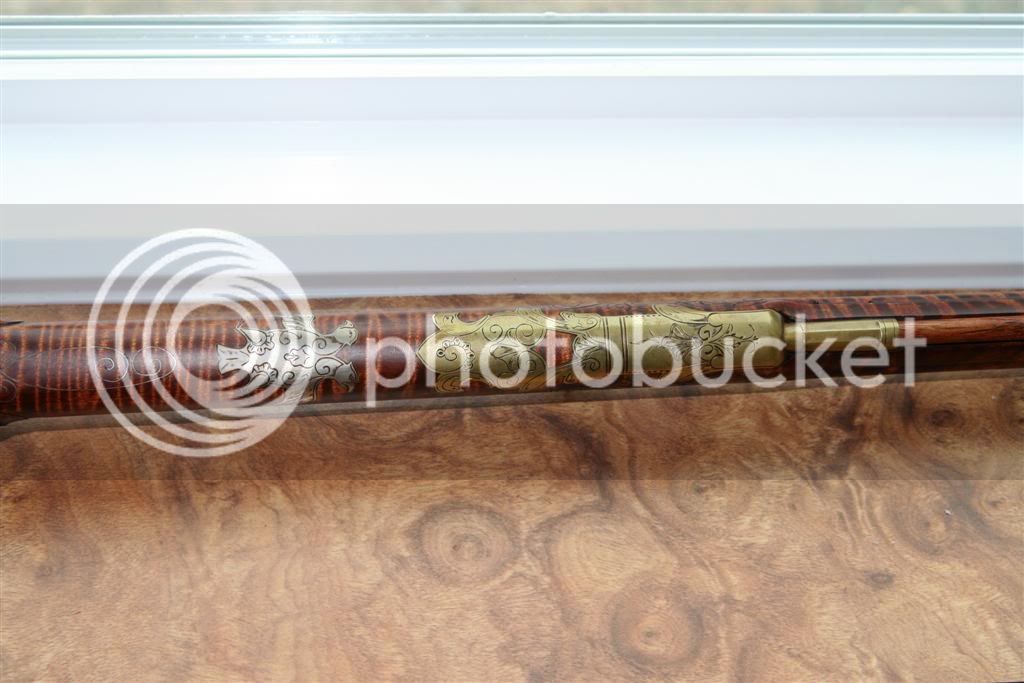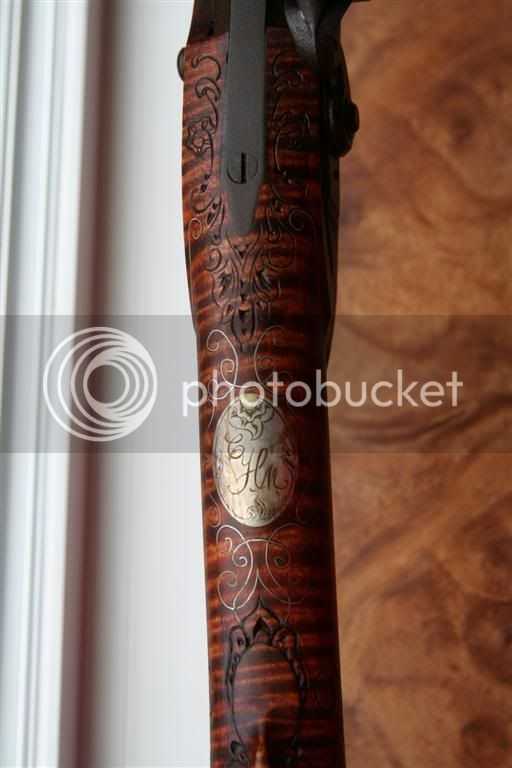- Joined
- May 9, 2005
- Messages
- 1,548
- Reaction score
- 99
I got hold of a copy of Shumway's Rifles of Colonial America, and immediately turned to my favorite style, the Bucks County rifles. In his introduction, he states that Bucks county styling is a product of the 1780's or 1790's, and he "corrects" Kindig, who attributed an Andrew Verner rifle to the 1760's.
However, Warren Moore's book, Weapons of the American Revolution and Accoutrements (1967, Promontory Press, New York) lists two rifles with Rev. War provenance that I believe are Bucks County pieces, the 2nd one with a provenance to Nicholas Allen of Morgan's Riflemen and inscribed N. A. 1770 on the sideplate. Here are scans of these rifles, as well as a Schneider rifle he illustrates next to the one by J. Daub.



Shumway is certainly one of the foremost experts in the field, but this seems to cast some doubt on his dating. Or perhaps Moore was wrong... :hmm:
Anyone have any insights, scholarship, or just plain guesses? :bull:
However, Warren Moore's book, Weapons of the American Revolution and Accoutrements (1967, Promontory Press, New York) lists two rifles with Rev. War provenance that I believe are Bucks County pieces, the 2nd one with a provenance to Nicholas Allen of Morgan's Riflemen and inscribed N. A. 1770 on the sideplate. Here are scans of these rifles, as well as a Schneider rifle he illustrates next to the one by J. Daub.



Shumway is certainly one of the foremost experts in the field, but this seems to cast some doubt on his dating. Or perhaps Moore was wrong... :hmm:
Anyone have any insights, scholarship, or just plain guesses? :bull:















